Cannabis Terroir: How Nature Shapes Flavor and Potency
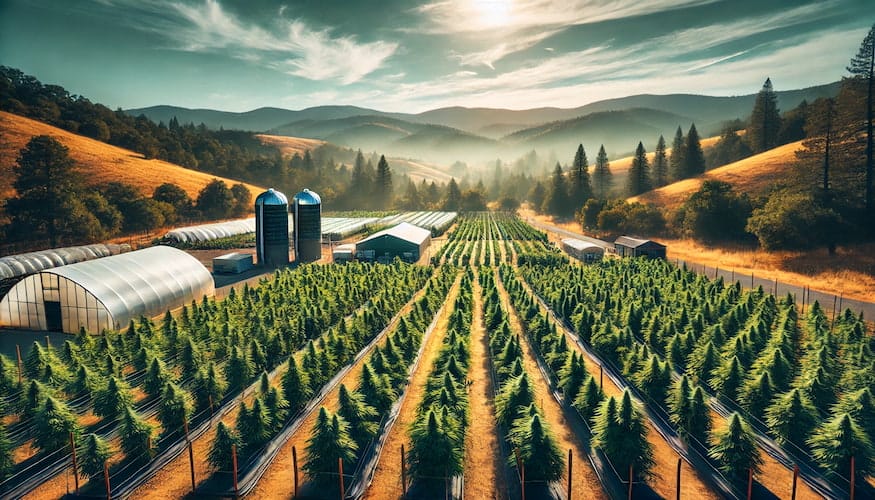
When I first heard the term “terroir” in the context of cannabis, I have to admit I was a bit skeptical. For years, I’d associated the term strictly with wine—its use so often attached to prestigious vineyards where soil, weather, and microclimate combine to create bottles of magic. Could the same logic apply to cannabis? Could the dirt a plant grows in, the breeze that cools its leaves, and the amount of sunlight it soaks up have such a profound effect on the final product?
As it turns out, the answer is a resounding yes.
What Is Terroir?
Let’s start by breaking down the concept of terroir. In the world of wine, terroir refers to the environmental factors—everything from soil composition to climate to altitude—that impact the taste, aroma, and texture of grapes and, ultimately, the wine they become. This isn’t something that can be replicated in a lab or controlled to the last detail in a greenhouse. It’s nature, with all its variability and nuances, infusing plants with a unique character.
This got me thinking about the cannabis I’ve consumed over the years. I’ve sampled weed from sunny California, misty Oregon, the high altitudes of Colorado, and the humid climates of Florida. And while I’d always noticed differences in flavor, potency, and effect, I’d often chalked that up to strain alone. But just as wine from two different regions can taste wildly different even if made from the same type of grape, cannabis grown in distinct environments can develop dramatically different profiles—terroir at work.
The Soil: The Bedrock of Terroir
The first piece of the puzzle is the soil. If you’ve ever dug your hands into the dirt, you know that soil is far from uniform. It’s a blend of organic matter, minerals, water, and air, and no two regions will have exactly the same composition. One of the best examples I can offer is the difference between cannabis grown in the rich, volcanic soil of Hawaii versus the loamy, clay-heavy soil of California’s Emerald Triangle.
In Hawaii, the plants often take on fruity, tropical flavors, like the legendary strain Maui Wowie, which boasts bright citrus and pineapple notes. The volcanic ash in the soil is teeming with minerals that feed the plant in a way that creates this distinctive flavor profile. Meanwhile, in Northern California, the clay-heavy soil, combined with the cool coastal breezes and hot summer sun, produces strains with earthier, more pine-like flavors. Strains like Humboldt OG or Blue Dream owe much of their complexity to these conditions.
I remember a grower telling me once that the soil is the cannabis plant’s pantry. It pulls from the nutrients stored there to build itself up, creating the chemical compounds we experience as taste and smell. The terroir of the soil shapes the plant’s aromatic and flavor profiles, just like a chef choosing ingredients from the best local markets.
Climate: The Influence of the Elements
Next up is climate, and this is where things get really interesting. Cannabis is a hearty plant—it’s been cultivated for centuries in every corner of the world, from the cold mountains of the Himalayas to the humid valleys of Southeast Asia. Each of these environments shapes the way the plant grows, matures, and ultimately expresses itself.
Think about indica strains that originate from the Hindu Kush mountains, like the famous Afghan Kush. These plants evolved to survive in harsh, cold climates, and as a result, they’re squat and sturdy, with dense buds and a thick coat of trichomes. This sticky resin acts as a protective layer, shielding the plant from the elements. When you smoke Afghan Kush, you get a heavy, sedative high—perfect for a cold night by the fire.
On the other hand, sativa strains from tropical regions like Thailand or Mexico tend to grow tall and lanky, with lighter and airier buds. The warm, humid climate allows these plants to develop over a longer growing season, resulting in a more cerebral and energizing high. The climate directly influences not only how these plants look and grow but also the type of high they deliver.
When I was traveling through Florida, I was lucky enough to visit a small-scale cannabis farm. The plants were grown in the red, iron-rich soil under a blazing sun, and the growers were insistent that the natural breeze and proximity to the ocean played a big role in the quality of their product. The Lamb’s Bread I tried there, a legendary Jamaican sativa, had a crisp, uplifting energy to it that I haven’t experienced anywhere else. That’s terroir—nature’s fingerprint on the plant.
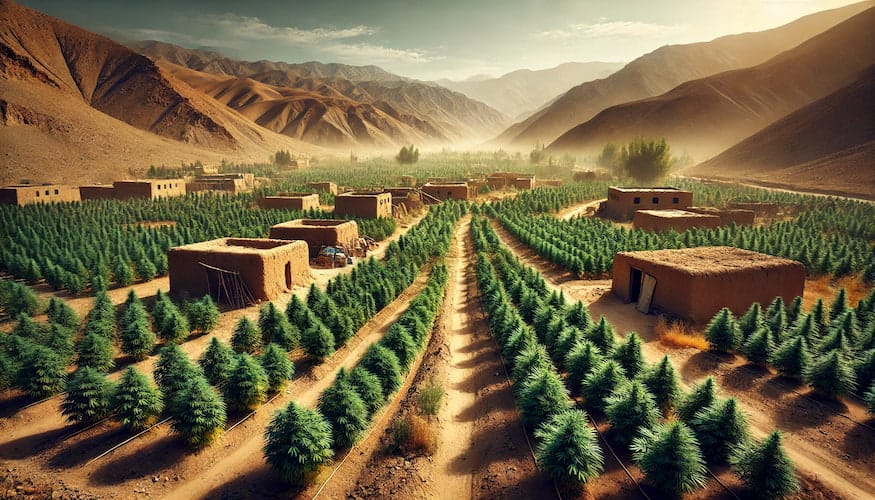
Microclimates: The Hidden Gem of Terroir
Beyond soil and general climate, the concept of microclimates takes the idea of terroir to a whole new level. Microclimates are small, localized areas where unique environmental conditions exist. These can be pockets within a larger region where elevation, wind patterns, and proximity to bodies of water create a distinct growing environment, even if it’s just a few miles down the road from another area.
Take the Emerald Triangle again, for example. Within this famous growing region, which spans three counties in Northern California, there are numerous microclimates. Some areas benefit from heavy morning fog, which helps the plants retain moisture and develop thicker leaves. Other parts are drier and hotter, encouraging the plants to grow larger and produce bigger yields. A friend of mine grows cannabis in Humboldt County, and he swears that even the slope of his land—whether his plants face the morning sun or afternoon sun—makes a noticeable difference in the flavor of the final product.
Microclimates are also a big deal in places like Southern Oregon, where the Rogue Valley has become a hotspot for craft cannabis cultivation. The valley is sheltered by mountains, creating a unique combination of hot summers and cooler nights that allow cannabis plants to thrive. The result? Strains with robust terpene profiles, rich in flavors like citrus, pine, and spice.
Altitude: Growing Higher
Altitude also plays a surprising role in cannabis terroir. Higher altitudes often mean cooler nights, which can slow down the growth of a plant and lead to the production of more cannabinoids and terpenes. This is why strains grown in the high-altitude regions of Colorado, for instance, often have a different potency and terpene profile than the same strain grown at sea level.
One grower explained to me how high altitudes force plants to adapt to the thinner air and cooler temperatures. He showed me his crop of Durban Poison, a sativa strain that’s known for its energetic, uplifting effects. Grown at over 8,000 feet, the buds were denser and more resinous than what I’d seen from the same strain grown in other places. The cooler nights at that elevation, he explained, help the plant develop more trichomes, which are responsible for those delicious terpenes and cannabinoids.
Water: The Source of Life
Water, often overlooked, is another critical component of terroir. The source of water—whether it’s river water, groundwater, or rainwater—can have a major influence on how cannabis grows and tastes. Each source has its own mineral content, and plants absorb these minerals, which in turn affects the flavor and potency of the cannabis.
In some regions, growers swear by the use of natural spring water. In the Emerald Triangle, for example, many farms are located near natural springs or rivers, and the water is rich in minerals like calcium and magnesium. These minerals are essential for healthy plant growth and contribute to the overall flavor profile of the final product. The quality of spring water also tends to be consistent—unlike that of rainwater, which can vary depending on the season.
The Human Element: Craftsmanship and Care
Terroir isn’t just about nature, though. The human touch plays a crucial role in shaping the final product, too. Just like winemakers carefully tend their vineyards, cannabis growers bring their expertise and artistry to the cultivation process. From choosing the right genetics to deciding when to harvest, every decision a grower makes impacts the final flavor, potency, and effect of the cannabis.
Some growers are deeply in tune with the land they work on, using organic farming practices and sustainable methods that honor the environment. These growers are often the ones who produce cannabis with the most pronounced sense of terroir. I’ve met farmers who compost their own soil, grow their plants under the sun without artificial light, and hand-trim every bud to preserve its natural character. This kind of craftsmanship can’t be replicated in a massive commercial grow room, no matter how advanced the technology.
One story that sticks with me is from a small-scale grower in Mendocino County. She told me about the relationship she had with her land—how she spent years observing the way the sun hit different parts of her property, learning when the first frost would come and how to prepare for it. She planted her cannabis alongside other crops, creating a biodiversity that kept pests in check without the need for harmful chemicals. The cannabis she produced wasn’t just a product of the strain or the soil; it was a reflection of the time and care she invested in the land.
The buds she shared with me had a distinct, almost floral aroma, with a subtle sweetness that lingered on the palate. It was unlike anything I’d ever tried before, and she explained that this unique flavor came from the cover crops she used to nourish the soil—things like clover and lavender, which added their own notes to the final product.
Terpenes: The Flavor of Terroir
No conversation about cannabis terroir would be complete without talking about terpenes. These volatile oils give cannabis its distinctive smell and taste. Terpenes are responsible for everything from the piney, earthy scent of OG Kush to the sweet, fruity aroma of Pineapple Express. What’s fascinating is how the terroir influences the concentration and type of terpenes produced by the cannabis plant.
Take Limonene, for example, a terpene commonly found in strains with a citrusy profile. Cannabis grown in sunny, warm climates tends to produce higher levels of limonene, which makes sense when you think about the conditions that foster citrus fruits. On the other hand, strains grown in cooler, more forested regions might produce higher levels of Pinene, a terpene that has a sharp, pine-tree scent. These environmental influences directly contribute to the rich tapestry of flavors and aromas that define each strain.
In many ways, terpenes are the bridge between the environment and the experience of consuming cannabis. They not only affect the flavor and aroma but also the effects. Certain terpenes, like Linalool, are known for their calming, anti-anxiety properties, while others, like Caryophyllene, contribute to pain relief and anti-inflammatory effects. The levels of these terpenes are influenced by everything from the type of soil to the amount of sunlight the plant receives, making them one of the most important components of cannabis terroir.
The Role of Genetics: Strains and Terroir
While terroir is all about the influence of the environment, we can’t ignore the role of genetics. Every strain of cannabis has its own genetic blueprint that determines its potential for growth, flavor, and effect. But even within the same strain, plants grown in different environments can express themselves in wildly different ways.
I’ve seen this firsthand with Blue Dream, one of the most popular strains in the world. Grown in California’s coastal regions, it often has a sweet, berry flavor with a hint of pine. But I’ve also tried Blue Dream grown in Colorado, where the higher altitude and cooler nights give it a more earthy, floral taste. The same genetics, yet two very different expressions, thanks to terroir.
One of the most exciting aspects of cannabis cultivation is the way breeders are now experimenting with crossbreeding strains to create new varieties that are specifically suited to particular environments. These cultivars blend the best of both worlds, combining the hardiness and flavor profiles of landrace strains—those that have adapted to specific regions over centuries—with the potency and effects of modern hybrids.
Many growers are passionate about preserving the unique genetics of landrace strains, like Durban Poison from South Africa or Acapulco Gold from Mexico. These strains carry the history of their regions in their DNA, and when grown in their native environments, they express flavors and effects that are deeply tied to the land. But when crossbred with modern strains, they can create something entirely new, with a sense of terroir that reflects both their origins and the environment in which they’re grown.
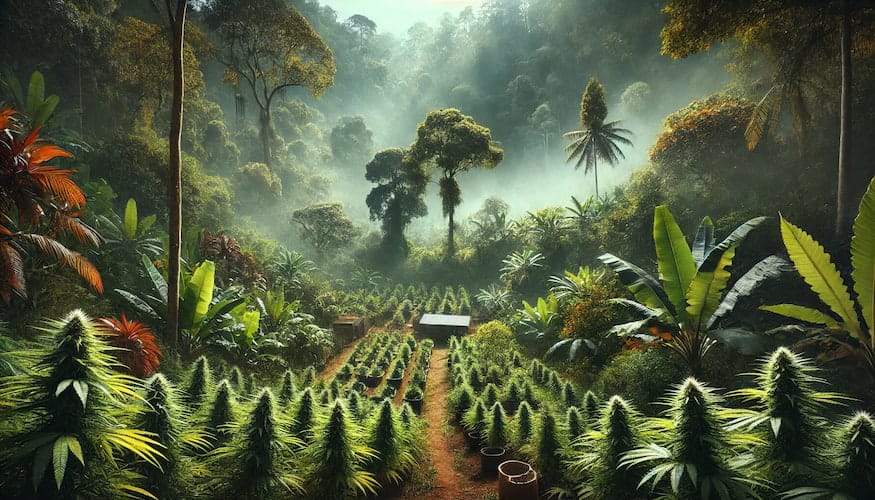
The Future of Cannabis Terroir: Craft and Connoisseurship
As cannabis continues to be legalized and accepted in more parts of the world, the concept of terroir is likely to play an even bigger role in the way we cultivate and consume it. Just as wine lovers seek out bottles from specific regions, I can easily see cannabis enthusiasts developing a taste for buds grown in particular terroirs.
Imagine walking into a dispensary and browsing through jars of cannabis labeled not just by strain but by region: Lamb’s Bread from Jamaica, Afghan Kush from the mountains of Afghanistan, Hawaiian from the volcanic soil of Maui—each one offering a distinct flavor and experience, shaped by the environment in which it was grown.
This shift is already happening in places like Northern California, where small-scale, craft cannabis farmers are emphasizing their growing practices and the unique terroirs of their land. These growers are using organic methods, paying attention to the health of their soil, and focusing on sustainability. The result is a product that’s not just potent and flavorful but also has a story behind it—a connection to the land.
I’ve had the pleasure of visiting several craft cannabis farms, and the passion these growers have for their work is contagious. They talk about their plants the way a chef might talk about ingredients, describing the subtle differences in flavor and aroma that result from changes in the environment. And just like wine or coffee, the idea of “single-origin” cannabis is starting to catch on. This is cannabis that’s grown in one specific place, harvested and cured by hand, and sold in small batches—each jar representing the unique terroir of that farm.
Conclusion: The Essence of Cannabis Terroir
Cannabis terroir is more than just a buzzword—it’s a powerful concept that helps us understand the intimate relationship between a plant and its environment. From the soil and water to the altitude and climate, every aspect of a region contributes to the final product, giving cannabis its unique character and flavor. And just like with wine, appreciating these differences can enhance our enjoyment and deepen our connection to the plant.
As legalization spreads and the cannabis industry grows, I believe we’ll see a greater emphasis on terroir. Small, craft cannabis farms that emphasize sustainable, organic growing practices will lead the way, offering products that truly reflect the land. For cannabis enthusiasts like me, this is an exciting prospect—one that promises a future of even more diverse, flavorful, and regionally distinct strains.
The next time you light up a joint or pack a bowl, take a moment to think about where your cannabis came from. Was it grown under the hot sun of California’s Central Valley, or in the cool mountain air of Colorado? Did the soil contribute to its earthy aroma, or did the wind and rain help shape its flavor? These are the questions that deepen our appreciation for cannabis terroir and remind us that, just like wine, this plant is a product of its environment—beautifully unique and full of character.
So here’s to cannabis terroir: a celebration of nature’s influence on our favorite flower, and a reminder that the best cannabis is one that carries the essence of its home in every puff.
Subscribe to our newsletter
Your dream garden is a subscription away! Join our email list and enter our Monthly Seed Giveaway. Imagine the possibilities each month as you await your chance to win.
By clicking the "JOIN US!" button, I agree and accept the privacy policy of SeedsHereNow.
Suggested Articles
;)
;)
;)




 21 Dec 2025
21 Dec 2025  9 min read
9 min read
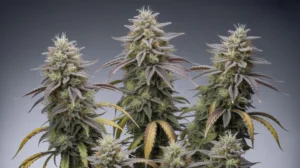
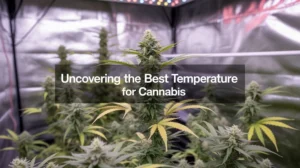
 September 19, 2024
September 19, 2024 


RESPONSES (0)
No responses yet. Be the first to respond!